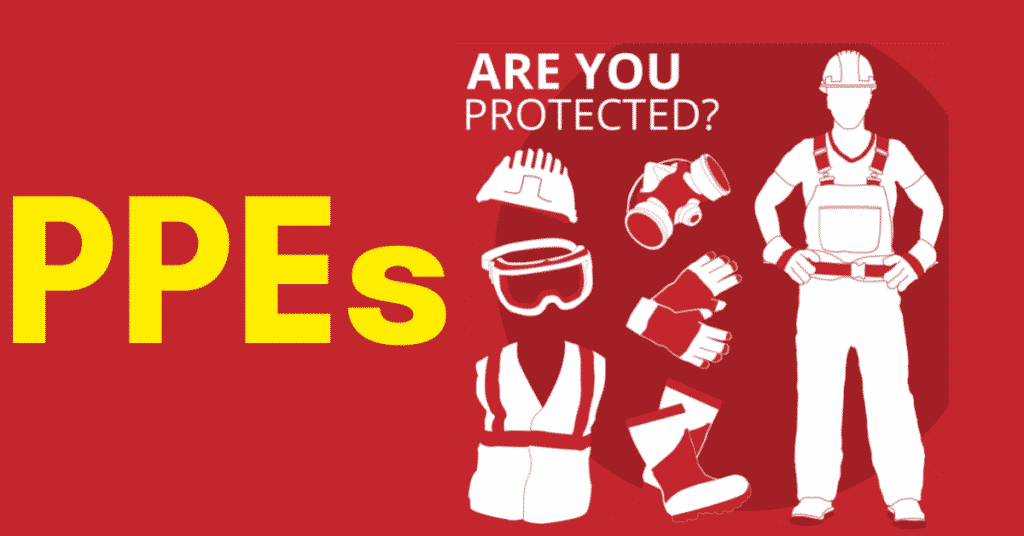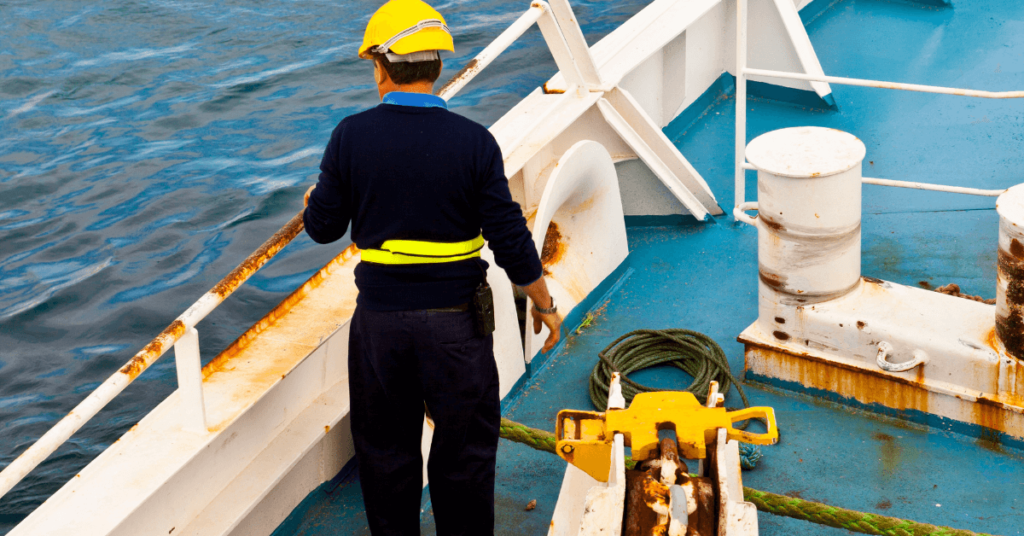What is Mooring of Ships?
Since childhood, we have been intrigued by this question: How are ships ‘parked’ upon their arrival in ports, jetties, and piers? Unlike cars, they can’t simply be put off gear and parking brakes! Ships don’t have brakes in the first place.
Ships need to be fastened and fixated soundly for conducting all kinds of shore operations such as cargo loading/unloading, refuelling, bunkering, ballasting/deballasting, boarding/deboarding, maintenance, repairing, and often for idle times based on voyage schedules and berth or workforce availability.
So, mooring or the system of securing a vessel soundly for the purposes mentioned above is indispensable in studying ships and offshore structures.
Differences between mooring, docking and anchoring
It is common to get confused with the terms mooring, docking and anchoring and may use them interchangeably. But there are stark differences between them.
Anchoring is the system of securing a vessel amid the sea when the ship is not near the vicinity of a permanent structure. In other words, when a vessel requires to be fastened or stranded for various purposes in the deep waters, anchoring is used so that the vessel does not drift away in the action of hydrodynamic forces present in various forms. For anchorage or anchoring, anchors, those heavy weights as old as the history of ships, have been used for a very long time.
However, in recent times, vessels can be secured anywhere in the seas with the help of in-situ dynamic positioning systems (DPS), which are automated systems that can keep the vessel affixed to a particular coordinate without the help of anchors.
In the traditional systems of anchors, the heavyweight is suspended from the vessel and is allowed to settle onto the seabed. This fixity of the weight in the seabed and the resultant high degrees of tension created in the strong anchoring lines, which are heavy-built lock chains, helps keep the vessel in its position. The size of the anchors depends on the size of the vessel.
Docking, on the other hand, alludes to the hauling of the vessel entirely away from the water to a dry area adjacent to the surrounding waters for various purposes such as maintenance, repair, refitting, or even disposing of an old vessel. Here, for all practical purposes, the vessel is suitably shifted to an enclosed area, and the water is then drained off, leading to a dry surface. The term ‘dry docking’ is often used for repair and maintenance work.
Now, mooring again is the fastening of a vessel to any shore or land-based structure with the help of suitable mechanisms such that the vessel is not subjected to free motion. This land-based structure may include berths, jetties, piers, wharves, quays, etc.
Components of Mooring
The basic components of a typical mooring system are as follows:
Mooring Lines
These are the main components of any mooring system. In earlier times, ropes were mainly used as mooring lines. However, steel or high-grade synthetic materials have been widely used. The main requirements of any mooring line should be high strength and elasticity. The forces transmitted from the ship structures are transmitted directly to these mooring lines.
The net effect on the lines becomes manifold from this static load coupled with the random dynamic behaviour from the tendency of motions or environmental loads acting on the ship. So, these mooring lines’ material and sizes are carefully chosen based on the vessel and the type of mooring arrangement.
All mooring lines are characteristic of a Safe Working Load or SWL based on their properties. Like all other structures, these mooring lines have a definite breaking strength with a safety factor margin. Steel hybrids of high grades are often used, and common materials such as Polyamide or HMPE are used for synthetic.
Generally, lower elastic or higher rigid but greater strength lines are used for larger vessels, and higher elastic or less rigid materials are used for smaller ships. The reason is that heavier vessels, due to their greater inertia, have a lesser tendency to respond to external forces and, thus, are less subjected to random motion parameters than smaller vessels. Therefore, when these lines have higher flexibility, they can cater to smaller ships more prone to motion when moored. HMPE and steel have low elasticity, whereas other materials, such as polyamide, have greater elasticity.
Mooring Winches
On the shoreside, the mooring lines are joined to the winches. These winches act as end supports for these lines and help in handling and directing the lines as per requirements. The winch system controls the tension and extension of the mooring lines. The mooring lines are commonly operated by electro-hydraulic power that uses hydraulic pressure to control the tension and traction forces on the lines. The main component of the winches is cable drums, either oriented horizontally or vertically. The size of the drum once again depends on the ropes.
Driving Systems
The winches are operated by electrical and hydraulic mechanisms. These are mainly dedicated engines or motors that supply the power to the winch through torque. In turn, the power supply is from the shore supply main lines. These systems’ capacity is as per the capacity and configuration of the winch and related mooring lines.
Vessel fittings or attachments
At the other end of the mooring lines, they must be tightly secured to the vessel structure. These attachments are usually on the main deck but can sometimes be placed in subsequent decks. Once again, based on the type of vessel, the number, size, type, and configuration of these fittings are present. The fittings associated with these mooring are all designed and constructed per standard IACS guidelines based on the vessel and the related mooring system. Usually, the fitting used are chocks, bollards, fairleads, bitts, etc.
Fenders
Now, despite the mooring lines, vessels often tend towards motion and, as a result, can be prone to hit on the adjacent shore or dock structure to which it is secured. Such impacts can result in damage to the shore structure as well as the vessel. So, for the same reason, the vessel and the shore structure are padded with a securing arrangement known as fenders, which absorb impact energy in the event of a collision or strike. The design of the fenders is once again based on the vessel type and size. They are usually made of rubber, wood, or high-grade synthetic polymers.
Competence of a mooring system
Now, for a mooring system, the main job is to secure a vessel in its position when berthed safely and also ensure that the vessel is kept sound from collisions or damages due to vessel-structure interactions due to external dynamic forces. Moreover, the mooring arrangement should be such that for various port or dock operations, there is never a problem. So, for a good mooring system for a given vessel, the main characteristics can be listed as follows:
- Symmetrical nature of the vessel and uniformity of position
- Maximum possible resistance against the rotational and translatory motions of the vessel.
- Uniformity concerning the shore connections or winches such that the tension forces of the entire mooring arrangement remain more or less in equilibrium without any mechanical imbalance on both the ship structure and the shore.
- Maximum space to cater for the minimum motions of the vessel without any hindrance, how sound the arrangement may be.
- Reliability
- Safety
- Ability to cater continuously round the clock for a single vessel stranded for a long time or multiple ships coming to be secured at the same arrangement without structural fatigue or failure.
- The capability remains intact under all weather conditions when the forces imposed on the lines and the attachments are very high.
- Having provisions for surplus or spares when required or in the event of a partial failure.
Types of mooring (Based on configuration)
Mooring can be of various types:
- Single-Point Mooring
- Multi-Point Mooring
- Standing Mooring
- Running Mooring
- Mediterranean Mooring
- Canal Mooring
You might also like to read
- How Baltic Mooring of Ship is Done?
- What is a Mooring Buoy?
- 6 Common Mooring Methods Used For Ships
- 10 Important Points For Ship’s Mooring Equipment Maintenance
- How to Adjust the Load Sensors on Mooring Winches?
- What is Mediterranean Mooring of Ships?
- 10 Important Points to Remember During Mooring Operation On Ships
Disclaimer: The authors’ views expressed in this article do not necessarily reflect the views of Marine Insight. Data and charts, if used, in the article have been sourced from available information and have not been authenticated by any statutory authority. The author and Marine Insight do not claim it to be accurate nor accept any responsibility for the same. The views constitute only the opinions and do not constitute any guidelines or recommendations on any course of action to be followed by the reader.
The article or images cannot be reproduced, copied, shared, or used in any form without the permission of the author and Marine Insight.
Latest Ship Safety Articles You Would Like:
Do you have info to share with us ? Suggest a correction
Latest Marine Navigation Articles You Would Like:
Subscribe To Our Newsletters
By subscribing, you agree to our Privacy Policy and may receive occasional deal communications; you can unsubscribe anytime.
Web Stories
Related Posts

About Author
Subhodeep is a Naval Architecture and Ocean Engineering graduate. Interested in the intricacies of marine structures and goal-based design aspects, he is dedicated to sharing and propagation of common technical knowledge within this sector, which, at this very moment, requires a turnabout to flourish back to its old glory.







































